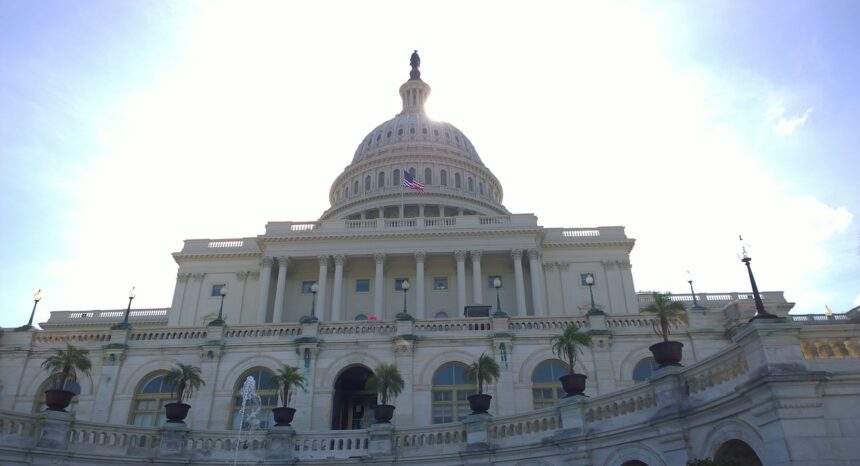As the two-year cycles of American national voting roll by, a predictable pattern emerges: Only a few times during modern midterm elections has the president’s party gained seats in Congress (1934, 1998 and 2002 are notable exceptions, while some have had mixed results). Behind this dynamic is some basic arithmetic well known to political scientists, who generally note that there are two larger explanatory factors.
First, midterm elections usually see smaller voter turnout, and the composition of the electorate is typically different, as compared to presidential years. Presidential elections see roughly 60% voter turnout, and many of these voters are less partisan; by contrast, turnout in midterms is more typically 40%, and the voting base is comprised of more motivated partisans. In presidential election years, many more “casual” and less ideological voters may come out to elect a presidential candidate riding a wave of momentum. Thus, the Congressional candidates who also run that year — such as 2008, when Barack Obama enjoyed a surge of popularity — pick up a “bonus” of sorts in terms of extra voters. This “bonus” is frequently erased, however, when Congressional incumbents are running during midterms. In the 2014 election, many of the first-term Democratic Senators elected in the Obama 2008 wave are up for reelection, and are facing difficult circumstances. Seven such Senate seats, in particular, have been the focus of commentators.
The second major factor explaining midterm voting patterns is that U.S. presidents almost always fall in the polls after they are elected, as they make policy choices and begin alienating more blocs within the electorate. This dip in presidential approval ratings then becomes a drag on the Congressional candidates — a real fear for Democrats in 2014.
In 2010, the United States saw yet another midterm election go to the party out of presidential power — Republicans, fired up by the Tea Party movement, picked up 64 seats in the House, and fell just short of taking the Senate. A 2014 study published in Political Behavior, “Blame, Responsibility and the Tea Party in the 2010 Midterm Elections,” provides insights into America’s most recent non-presidential year election, with lessons applicable to today. The paper — by Duke University researchers John H. Aldrich, Bradford H. Bishop, Rebecca S. Hatch, D. Sunshine Hillygus and David W. Rohde — notes that midterms are often modeled as a referendum on the president in office; this approach has long been emphasized by academics. However, in 2010 the GOP gained many more seats than could be explained through such a model.
The Duke scholars focus on the degree to which statewide elections for Congress were in effect “nationalized,” and voters were motivated to reject the national Democratic legislative agenda, such as the stimulus package (the American Recovery and Reinvestment Act of 2009) and the Patient Protection and Affordable Care Act of 2010 (so-called “Obamacare”). But they also examine precisely how Democrats were blamed even by voters who were not Tea Party supporters. The study analyzes data from the 2010 Cooperative Congressional Election Study (CCES), a “national stratified two-wave Internet survey administered by YouGov” to more than 55,000 respondents.
The study’s findings include:
- About 20% of the sample “blamed Democrats for the state of national affairs” and almost all of these voted for Republican Congressional candidates.
- Further, “Another key group of voters, making up 48% of respondents, believed that both Democrats and Republicans were partly to blame for the nation’s problems. A majority of this group, however, ultimately held Democrats responsible in the voting booth for the fact that national conditions had not yet improved, voting Republican by a 60-40 margin.” This means that “Tea Party supporters and those who blamed both parties were two distinct groups of voters contributing to the Democratic loss.”
- Overall, the data suggest it is too simplistic to characterize all voters who went for Republican candidates as “anti-Obama or anti-Democrat.”
- The researchers estimate that, if voters who held both parties responsible for the national state of affairs had split their votes evenly between the two parties, it would have given Democrats a 5-percentage-point increase in vote share in House races — “creating near parity with the Republicans,” and preventing a landslide in that midterm election.
- The general takeaway from the data examined — which echoes a previous Republican midterm sweep in 1994 — is that “in highly nationalized midterm election years with dissatisfied voters and unified government, we may expect to see the blame and responsibility attribution pattern that we observed in 2010.”
“Our results suggest that the unique blame-attribution process among voters, along with the Tea Party’s anger toward the policy efforts of a unified and Democratically controlled government, helped to intensify the nationalization of this election in a way that aided Republican success,” the study’s authors conclude. “National considerations factored into individuals’ voting decisions in a variety of ways in this election, and without either of these two groups of voters, we likely would not have observed such a dramatic election outcome.” Crucially, the study suggests that voters who blame both parties may go decisively for the party out of presidential power, with implications for the 2014 midterms.
Related research: The Pew Research Center surveys some of the explanations for a drop-off in voter turnout during midterm elections. A 2014 paper by Brown University’s Brian Knight finds that the “Presidential penalty” — “defined as a preference for supporting the opposition during midterm years” — plays the largest role in helping to explain midterm losses.
Keywords: presidency, presidential politics, campaign issue, polarization


Expert Commentary